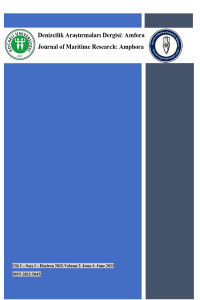Denizde Yasadışı Eylemlerin Önlenmesine Dair Sözleşme ve Protokolün Deniz Haydutluğu, Seyir Güvenliği ve Deniz Terörü ile İlişkisi
Gemilerin seyir güvenliğini sağlamak ve deniz ticareti yollarının güvenli şekilde hizmet vermesini temin edebilmek için Birleşmiş Milletler (UN) ve Dünya Denizcilik Örgütü (IMO) uluslararası mevzuatlar ortaya koyarak denizlerde gerçekleşebilecek ve suç olarak kabul edilecek yasadışı eylemlerin “Kanunsuz suç ve ceza olmaz” ilkesi kapsamında unsurlarının belirlenmesi çalışmaları yapılmıştır. Bu çalışmada uluslararası denizcilik ilişkili mevzuatlarda belirlenmiş yasadışı faaliyetler incelenmiş, öncelikle Birleşmiş Milletler Deniz Hukuku Sözleşmesi’ndeki (UNCLOS 1982) “deniz haydutluğu” kavramının kapsamı ele alınarak kapsamın darlığı anlatılmış, ardından Denizde Seyir Güvenliğine Karşı Yasa Dışı Eylemlerin Önlenmesine Dair Sözleşme’de (SUA 1988) geçen “seyir güvenliği” kapsamı değerlendirilerek “deniz haydutluğu” ile ilişkisi ortaya koyulmuş ve akabinde Denizde Seyir Güvenliğine Karşı Yasa Dışı Eylemlerin Önlenmesine Dair Protokol (SUA 2005) ile ortaya çıkan “deniz terörü” kavramı “seyir güvenliği” ile ilişkilendirilmiştir.
The Relationship Between the Convention for the Suppression of Unlawful Acts and Protocol with Piracy, Navigational Safety and Maritime Terrorism
In order to secure the safety of navigation of ships and to ensure that maritime trade routes provide safe service, international regulations have been introduced by the United Nations (UN) and the International Maritime Organization (IMO) and studies were carried out to determine the action elements of illegal activities that may take place in the seas and can be considered as crimes within the scope of the principle of "There is no crime or punishment without law". In this study, illegal activities determined in international maritime-related legislation were examined; first of all, the scope of the concept of "piracy" in the United Nations Convention on the Law of the Sea (UNCLOS 1982) is discussed and the lack of its scope is explained, then the scope of "safety of navigation" and its relation with “piracy” in the Convention for the Suppression of Unlawful Acts Against the Safety of Maritime Navigation ("SUA 1988") is evaluated. Subsequently, the concept of "maritime terrorism", which emerged with the Protocol of 2005 to the Convention for the Suppression of Unlawful Acts Against the Safety of Maritime Navigation (SUA 2005), is tackled with "cruising safety".
___
- Bane, A. (2012). Pirates Without Treasure: The Fourth Circuit Declares that Robbery Is Not an Essential Element of General Piracy.
- Bento, L. (2011). Toward An International Law of Piracy Sui Generis: How the Dual Nature of Maritime Piracy Law Enables Piracy to Flourish.
- Doğru, S. (2017). Uluslararası Hukukta Deniz Haydutluğu: Uluslararası Toplumun Mücadelesi ve Türkiye'nin Katkıları.
- Evin, B. (2012). Uluslararası Hukukta Deniz Haydutluğu Kavramı ve Şiddet Faktörü, (2012).
- Kızılsümer, Özer, D. (2016). Uluslararası Hukuk ve Denizde Yasadışı Faaliyetlerin Önlenmesi
- Kozanhan, M. K. (2021). Unlawfull Acts Threatening Maritime Security and Sua Convention
- Kraska, J. (2017). Effective Implementation of the 2005 Convention for the Suppressionof Unlawful Acts against the Safety of Maritime Navigation.
- Otto, L. and Jernberg L. (2020). Maritime Piracy and Armed Robbery at Sea.
- Şahin, K. (2021). Küresel Deniz Güvenliğine Yönelik Hukuki Tedbirler: Uluslararası Denizcilik Örgütü Sözleşme, Karar, Protokol, Kod ve Uygulamaları.
- Tuerk, H. (2008). Combating Terrorism At Sea -- The Suppression Of Unlawful Acts Against.
